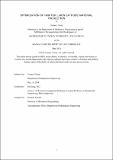Optimization of Fasp for Li-Ion Cathode Material Production
Author(s)
Hickey, Connor
DownloadThesis PDF (1.224Mb)
Advisor
Deng, Sili
Terms of use
Metadata
Show full item recordAbstract
The need to improve battery technology is higher than ever given the projected increase in battery consumption in the next decade and beyond. One key limiting factor of batteries is their cost, and one major way to reduce battery costs is by decreasing the time needed to produce them. The FASP system uses Flame-Assisted Spray Pyrolysis, and the principles of combustion to speed the process of creating the materials for lithium-ion cathodes, more specifically the NCM-811 variation of the lithium-ion batteries. This study aims to identify key factors in improving the powder production of the FASP system. One way it aims to do this is by creating a CFD simulation, within ANSYS, to create an accurate picture of the behaviour of the fluids within the pipe flow. Another way it aims to optimize FASP is by conducting various experiments to test the simulations and try to find areas of disagreement to find a direction to improve the CFD model. The final way this paper aims to optimize FASP is by conducting several powder-producing experiments and testing various variables to find the best combination.
Date issued
2024-05Department
Massachusetts Institute of Technology. Department of Mechanical EngineeringPublisher
Massachusetts Institute of Technology